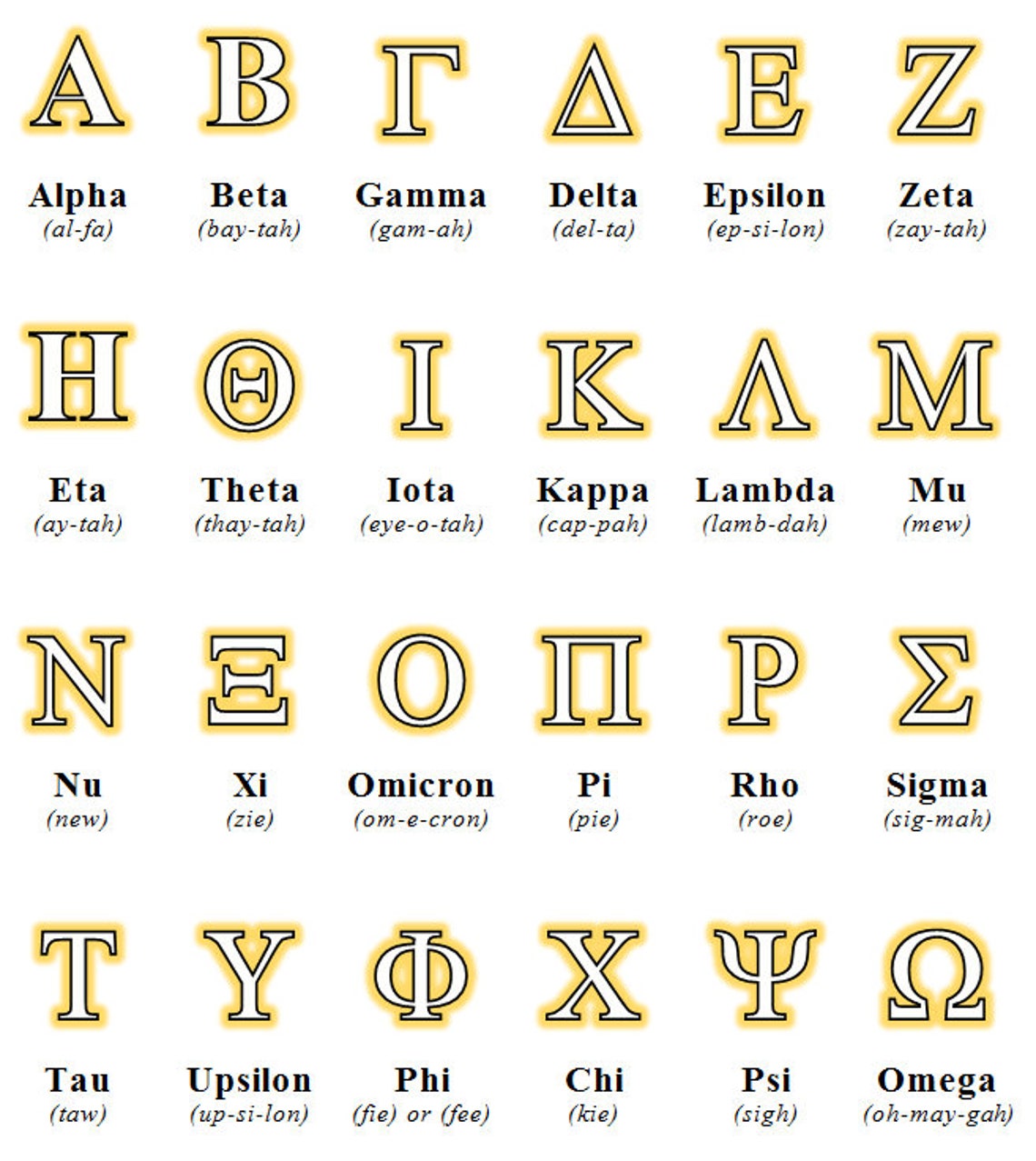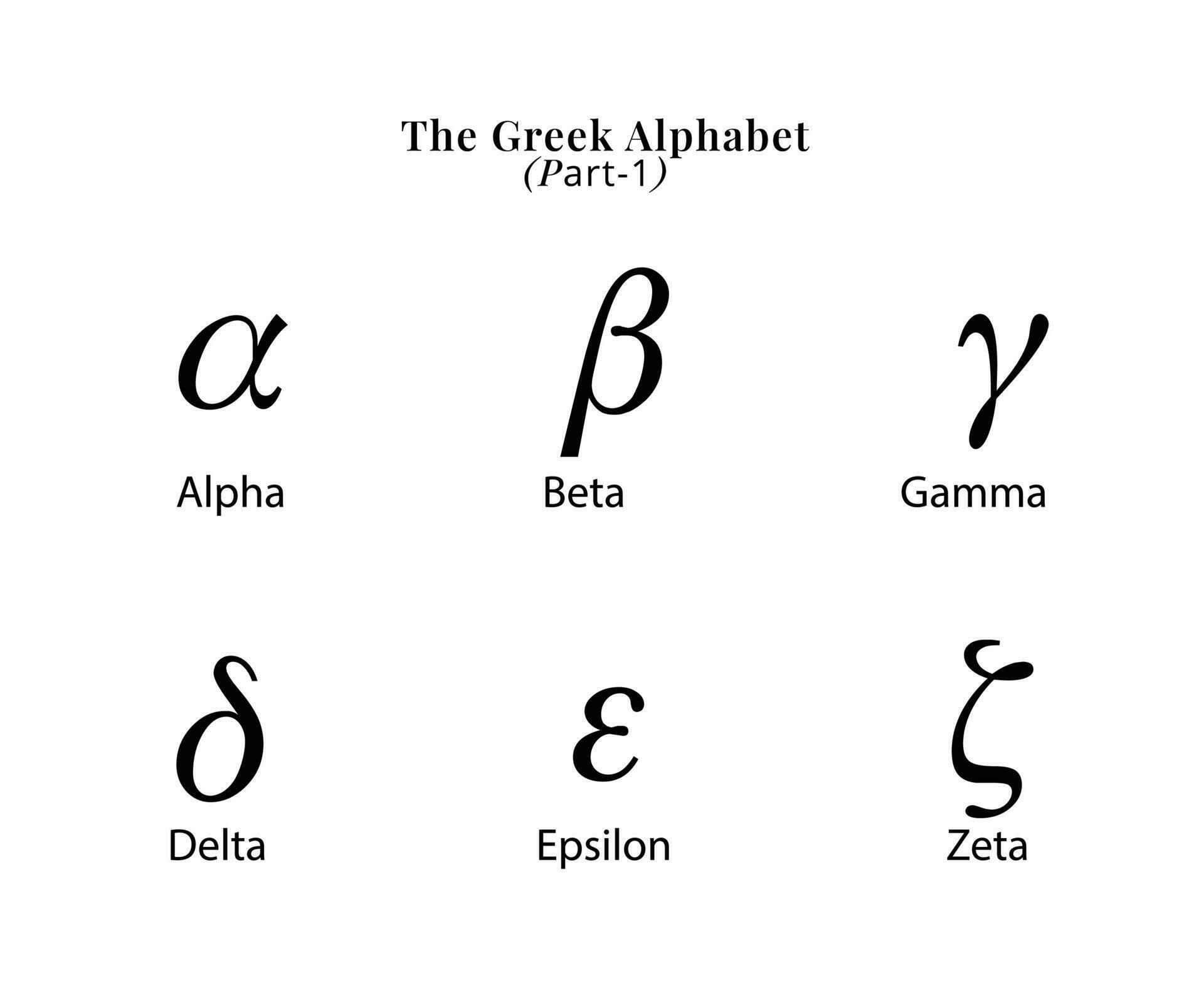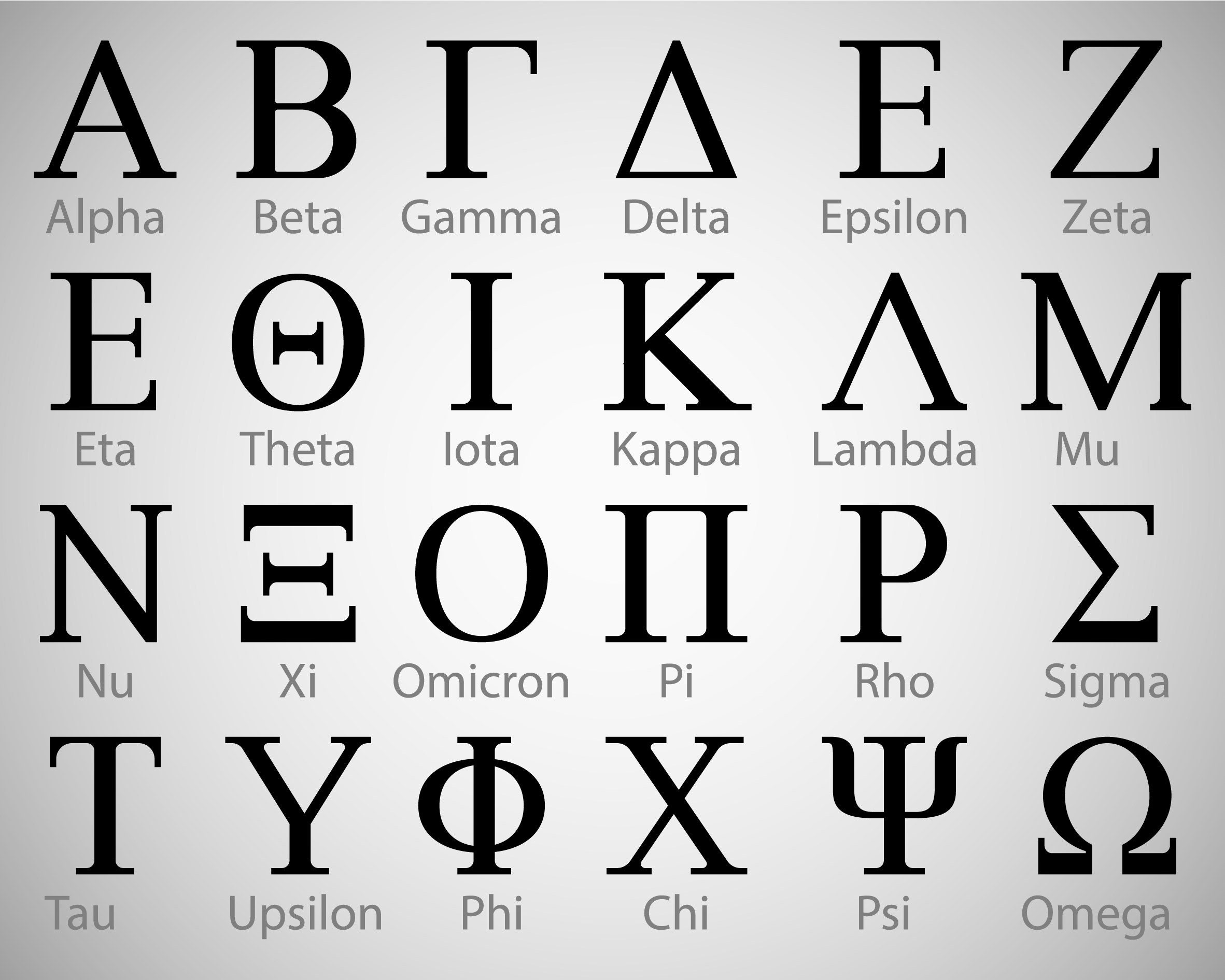Unveiling Alpha, Theta, Epsilon: Symbols Of Diverse Power
From the subtle nuances of human interaction to the complex algorithms that power our digital world, and from the precise measurements of scientific research to the abstract beauty of mathematics, the Greek letters alpha, theta, and epsilon permeate countless domains. These ancient symbols, far from being mere characters, embody profound concepts that shape our understanding of reality, technology, and even ourselves. This article delves into the multifaceted meanings and critical applications of these powerful letters, exploring how they define hierarchies, enable visual transparency, drive computational prowess, and underpin statistical certainty.
Understanding the diverse roles of alpha, theta, and epsilon is not just an academic exercise; it's a journey into the foundational principles that govern everything from social structures to the very fabric of the universe. By dissecting their individual significance and exploring their occasional intersections, we gain a richer appreciation for the subtle yet profound influence these symbols exert across various fields of human endeavor. Join us as we unravel the layers of meaning behind these ubiquitous Greek letters.
Table of Contents
- The Dominance of Alpha: From Social Hierarchies to Digital Dimensions
- Alpha in Social Dynamics: The Elite and the Vulnerable
- The Alpha Channel: Transparency in the Digital World
- Alpha's Scientific and Technological Footprint
- Alpha in Computing: Powering Supercomputers
- Alpha in Health and Wellness: Nootropics and Beyond
- Alpha in the Realm of Numbers and Measurements
- Statistical Significance: The Alpha Level in Hypothesis Testing
- Unraveling Material Properties: Thermal Diffusivity
- Theta: The Angle of Understanding
- Epsilon: The Infinitesimal Yet Profound
- The Interconnectedness of Alpha, Theta, and Epsilon
- Beyond the Symbols: The Human Connection
- Conclusion
The Dominance of Alpha: From Social Hierarchies to Digital Dimensions
The term "alpha" carries significant weight across various disciplines, often denoting superiority, primacy, or a foundational element. Its pervasive presence highlights its importance in defining structures and functionalities. Whether referring to a societal archetype or a crucial component of digital imagery, the concept of alpha is consistently associated with leadership, clarity, and fundamental significance.
Alpha in Social Dynamics: The Elite and the Vulnerable
In certain social and biological contexts, "alpha" describes individuals at the top of a hierarchy. The provided data highlights a specific, often controversial, interpretation: "alpha and omega are scarce. Alphas usually have good physique and brains, and are elites in society; omegas are very delicate, but have strong fertility, they are similar to ancient women, generally not allowed to work, but as precious reproductive tools." This perspective, while rooted in some biological observations of animal kingdom hierarchies, is often applied to human society with varying degrees of accuracy and controversy.
An "alpha male" or "alpha female" is typically characterized by strength, intelligence, confidence, and leadership qualities. They are seen as individuals who naturally command respect and often occupy positions of influence. Conversely, "omega" individuals are sometimes portrayed as more submissive, less physically robust, and, in this specific interpretation, primarily valued for their reproductive capacity. This dichotomous view, while simplistic, underscores a perceived natural order in some social theories, where alphas lead and others follow. It's important to note that modern sociology and psychology often view human social structures as far more complex and fluid than this rigid alpha-omega binary suggests. The concept of a "sigma male," for instance, has emerged as an alternative, describing someone who is independent and self-reliant, operating outside traditional hierarchies, and often misunderstood, which can be seen as either self-confident or a manifestation of inferiority.
The Alpha Channel: Transparency in the Digital World
Shifting gears dramatically, "alpha" takes on a purely technical meaning in the realm of digital imaging. The "Alpha Channel" is a fundamental component of image files, particularly those that support transparency. As the data states, "Why is it called the Alpha Channel? I think it's because it's the 'first channel' besides RGB, and there's no other deeper meaning. The 'Alpha Channel' is an inherent attribute of the image, and setting transparency with CSS or other external methods..." This explanation clarifies that the alpha channel is specifically responsible for controlling the opacity or transparency of each pixel in an image.
Unlike the Red, Green, and Blue (RGB) channels which define color, the alpha channel determines how visible a pixel is. A pixel with a full alpha value (e.g., 255 in an 8-bit system) is completely opaque, while a zero alpha value makes it completely transparent. Intermediate values create varying degrees of translucency. This seemingly simple concept is crucial for modern graphic design, web development, and visual effects, allowing for complex layering, seamless integration of images, and dynamic visual presentations. Without the alpha channel, images would always be rectangular and opaque, severely limiting creative possibilities. It's a prime example of how alpha signifies a foundational, enabling attribute in a technical context.
Alpha's Scientific and Technological Footprint
Beyond social dynamics and digital visuals, the Greek letter alpha plays a pivotal role in scientific research, technological innovation, and even personal well-being. Its appearance in diverse fields underscores its utility as a symbol for fundamental properties, advanced architectures, and biochemical compounds.
Alpha in Computing: Powering Supercomputers
In the world of computing, "Alpha" refers to a specific type of CPU architecture, historically known for its high performance, particularly in supercomputing. The data mentions: "...power CPU (RISC, old Apple used this); Alpha architecture CPU (focused on supercomputing, currently the most active seems to be China's Sunway, the CPU of Sunway TaihuLight is this)." The Alpha processor, originally developed by Digital Equipment Corporation (DEC), was a Reduced Instruction Set Computer (RISC) architecture that achieved impressive clock speeds and computational power in its heyday.
While DEC's Alpha line was eventually discontinued, its legacy lives on, particularly in high-performance computing. The reference to China's Sunway TaihuLight supercomputer using an Alpha-derived architecture (specifically the ShenWei SW26010) highlights the enduring influence of its design principles. These processors are designed for massive parallel processing, making them ideal for complex scientific simulations, weather forecasting, and other computationally intensive tasks. The "alpha" here signifies a cutting-edge, high-performance design that pushes the boundaries of what's possible in computing.
Alpha in Health and Wellness: Nootropics and Beyond
The term "alpha" also appears in the context of health supplements, particularly nootropics – substances that claim to improve cognitive function. "Alpha GPC" is a notable example. The data asks: "Is choline alphoscerate sodium, possibly a precursor to choline? Related to alpha gpc? Alpha GPC from the US costs 175 yuan for 60 capsules, one capsule a day is a 60-day dose, large packs of three bottles may often be on sale on US websites..."
Alpha-GPC (Alpha-glycerophosphocholine) is a natural choline compound found in the brain and in some foods. It's a popular nootropic because it's believed to efficiently deliver choline to the brain, which is a precursor to acetylcholine, a neurotransmitter vital for memory, learning, and other cognitive functions. As a supplement, it's often used to enhance athletic performance, improve focus, and support overall brain health. Here, "alpha" likely denotes a specific, highly bioavailable form of a compound, emphasizing its efficacy and potentially superior absorption compared to other choline sources. This application of alpha directly relates to human well-being and performance enhancement.
Alpha in the Realm of Numbers and Measurements
Mathematics, statistics, and physics frequently employ alpha as a variable or a constant, representing critical values, parameters, or coefficients. Its precise definition within these fields allows for rigorous analysis and accurate prediction, forming the backbone of scientific inquiry and technological development.
Statistical Significance: The Alpha Level in Hypothesis Testing
In statistics, the "alpha level" (often denoted as α) is a cornerstone of hypothesis testing. It represents the probability of making a Type I error – that is, incorrectly rejecting a true null hypothesis. The data illustrates this clearly: "If we set α=0.05, we will only reject the null hypothesis if we observe 'the lady answers 7 or more times correctly'; if we set α=0.01, we will only reject the null hypothesis if we observe 'the lady answers 8 times correctly.' It can be seen that if we want to commit Type I error..."
The alpha level, also known as the significance level, is a threshold chosen by researchers to determine statistical significance. A common alpha level is 0.05 (or 5%), meaning there's a 5% chance of incorrectly concluding there's an effect when there isn't one. A stricter alpha level, like 0.01 (1%), reduces the chance of a Type I error but increases the risk of a Type II error (failing to detect a real effect). This use of alpha is fundamental to scientific research, guiding decisions on whether observed data supports a hypothesis or is merely due to random chance. It directly impacts the trustworthiness of research findings, making it a critical YMYL (Your Money or Your Life) concept in fields like medicine and public health.
Unraveling Material Properties: Thermal Diffusivity
In physics and materials science, alpha often represents thermal diffusivity, a crucial property that describes how quickly heat propagates through a material. The formula provided in the data is: "α = λ / (ρ c_p)". Here, λ is thermal conductivity, ρ is density, and c_p is specific heat capacity. The explanation states: "Thermal diffusivity shows how fast heat diffuses in a material. For the same thermal conductivity, a material with higher specific heat capacity or higher density will have lower thermal diffusivity, meaning heat will pass through more slowly."
Understanding thermal diffusivity is vital for designing materials used in various applications, from insulation to heat sinks. For instance, materials with high thermal diffusivity quickly transfer heat away, making them suitable for cooling electronic components. Conversely, materials with low thermal diffusivity are excellent insulators. This scientific application of alpha is critical for engineering and product design, directly impacting performance and safety.
Furthermore, alpha is also used in the context of determining a material's band gap energy, particularly in semiconductors and photocatalysts. The data mentions: "Plotting (αhν)^n as the y-axis and hν as the x-axis, fitting the linear section yields a linear equation, and its x-intercept is the band gap energy. For example, one day, I synthesized a batch of titanium dioxide nanosheets..." This method, often related to Tauc plots, allows researchers to experimentally determine a material's fundamental electronic properties, which dictate its behavior in optoelectronic devices or catalytic reactions.
Theta: The Angle of Understanding
While perhaps less ubiquitous in its direct applications than alpha, the Greek letter theta (θ) holds a fundamental place in mathematics, particularly in geometry and trigonometry. It almost exclusively symbolizes an angle, serving as a universal placeholder for rotational measure. The data alludes to this: "Because any angle can be expressed as (kπ/2) + α (k∈Z), |α|<π/4, 1. When k is an even number, the same function value of α is obtained, i.e., the function name does not change; 2. When k is an odd number, the heteronymous function of angle α is obtained."
This mathematical principle, often referred to as "odd/even change, sign depends on quadrant" (奇变偶不变,符号看象限), is crucial for understanding trigonometric identities and the periodic nature of functions like sine, cosine, and tangent. Theta, as the variable for an angle, allows mathematicians and scientists to describe rotations, oscillations, and wave phenomena with precision. From calculating trajectories in physics to designing gears in engineering, the concept of an angle, represented by theta, is indispensable. Its consistent role as an angular variable provides a universal language for describing spatial relationships and dynamic processes. While not as diverse in its direct applications as alpha, theta's singular, critical role in defining angles makes it an equally foundational symbol in the quantitative sciences.
Epsilon: The Infinitesimal Yet Profound
The Greek letter epsilon (ε) often represents a very small, positive quantity. In mathematics, particularly in calculus and analysis, it is famously used in the rigorous definition of limits and continuity. When we say a function approaches a limit, we mean that for any arbitrarily small positive epsilon, there exists a corresponding delta such that the function's value is within epsilon of the limit. This concept, known as the "epsilon-delta definition," is a cornerstone of mathematical rigor, allowing mathematicians to precisely define concepts that might otherwise seem intuitive but vague.
While not explicitly mentioned in the provided data, the statistical "alpha level" (which is often a small value like 0.05 or 0.01) conceptually aligns with the idea of a small threshold or error margin, much like epsilon. In error analysis, epsilon might represent the maximum allowable error in a measurement or calculation. Its significance lies in its ability to quantify precision and define boundaries, even if those boundaries are incredibly narrow. Epsilon's role is to make abstract concepts like "arbitrarily close" or "negligible difference" mathematically concrete, thereby ensuring the robustness and reliability of theoretical frameworks. It is the symbol of precision, of getting "close enough," and of the subtle yet powerful influence of infinitesimally small quantities.
The Interconnectedness of Alpha, Theta, and Epsilon
While alpha, theta, and epsilon each possess distinct meanings and applications, their collective presence across diverse fields highlights a fascinating interconnectedness in human knowledge. Alpha defines leading elements, fundamental properties, and critical thresholds. Theta provides the framework for understanding spatial relationships and dynamic motion. Epsilon, though often representing the smallest of quantities, ensures the precision and rigor necessary for scientific and mathematical truth.
Consider how these concepts might implicitly interact:
- An engineer designing a supercomputer with an Alpha architecture might use mathematical models involving angles (theta) to optimize heat dissipation, where thermal diffusivity (alpha) is a key parameter, and the precision of calculations might be defined by a very small error margin (epsilon).
- A statistician analyzing data on the effectiveness of an Alpha GPC supplement might set an alpha level (statistical alpha) for their hypothesis test, while understanding the angular distribution (theta) of certain biological responses, all with a mind towards minimizing the epsilon of measurement error.
- Even in the abstract world of image processing, an alpha channel allows for nuanced transparency, which might be manipulated using algorithms that involve trigonometric functions (theta) and require precise, epsilon-level control over pixel values.
Beyond the Symbols: The Human Connection
The omnipresence of alpha, theta, and epsilon in our lexicon and scientific discourse is not merely a matter of convenience; it reflects humanity's innate drive to categorize, quantify, and understand the world around us. From the earliest Greek philosophers who used these letters to articulate their thoughts, to modern scientists leveraging them in groundbreaking research, these symbols serve as powerful shorthand for complex ideas. They enable clear communication, facilitate problem-solving, and provide a common language across disparate fields.
The "Alpha SV" jacket from Arc'teryx, mentioned in the data ("Alpha SV has a wealth of historical heritage and anecdotes behind it. For example, Arc'teryx required its partner Gore to insist on using waterproof seam tape while reducing weight..."), further exemplifies how these symbols transcend academic use and become embedded in popular culture and product branding. Here, "Alpha" signifies peak performance, durability, and a leading-edge design, echoing its broader connotations of excellence and superiority. This demonstrates how abstract symbols can inspire tangible products that meet human needs for quality and reliability. The trust associated with such a brand (E-E-A-T principles) is built upon the very concepts of precision and excellence that these Greek letters often represent.
Conclusion
The journey through the diverse meanings of alpha, theta, and epsilon reveals a fascinating tapestry of human knowledge. Alpha, with its connotations of primacy, transparency, and scientific rigor, defines leadership, visual clarity, and critical thresholds. Theta, the silent guardian of angles, provides the essential framework for understanding geometry and motion. Epsilon, the symbol of the infinitesimal, underpins the precision and certainty required for advanced mathematics and reliable scientific conclusions.
These Greek letters are far more than just characters; they are conceptual anchors that allow us to navigate and make sense of complex systems, from social hierarchies to the intricacies of digital imaging, from the power of supercomputers to the reliability of scientific data. Their continued relevance across such varied domains is a testament to their enduring power as symbols of fundamental principles. We encourage you to reflect on where you encounter these powerful symbols in your daily life and explore their deeper meanings. What other fascinating connections can you uncover? Share your thoughts in the comments below, and consider exploring our other articles on the foundational concepts that shape our world.

Painted Wooden Letter greek Alphabet - Etsy

The Greek alphabet small letter.Alpha,beta,gamma,delta,epsilon,zeta

Alpha Greek Letter Symbol